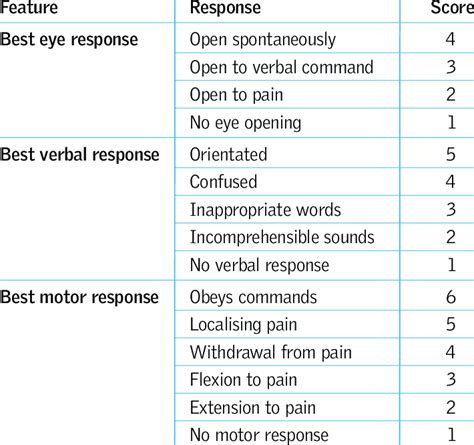Clinical Quick Reference Monthly Newsletter / December 2022 – Glasgow Coma Scale
Clinical Quick Reference Guides - Clinical Concept Review/Glasgow Coma Scale

This review will help clarify concepts related to the GCS.
What is the GCS?
The GCS, or Glasgow Coma Scale, is used to help healthcare providers objectively describe levels of consciousness in medical and trauma patients.
This tool uses a scale to guide assessment of patients according to three aspects of responsiveness: best eye-opening, motor, and verbal responses.
History of the Glasgow Coma Scale

The Glasgow Coma Scale was first published in 1974. Graham Teasdale and Bryan Jennett were the neurosurgery professors at the University of Glasgow responsible for its development.
Since its publication, the GCS has been considered the gold standard for neurologic assessment in trauma patients. This is due to its relative ease of use, simplicity and ability to succinctly document neurologic findings over time.
When Professor Jennett was interviewed in 1997, he credited nurses for the rapid adoption of the scale.
Picture: GCS Example
The Glasgow Coma Scale is required in NIH studies of head injury and the revised edition is used in countries all over the world.
Glasgow Coma Scale Domains
The Glasgow Coma Scale guides the clinician in the assessment of patients according to three key aspects of responsiveness.
These include:
eye-opening,
motor responses,
and verbal responses.
The findings in each area of the GCS comprise a total Glasgow Coma Score. This score communicates a record of any deficits and also provides what is sometimes referred to as a ‘shorthand’ summary of the patient’s overall state. The patient’s “score,” is a summation of the totals of each of the tool’s individual elements.
So:
GCS total score will be between three and 15, with three being the worst possible and 15 being the highest.
GCS Component Areas Review
Best Eye Opening Response (E)
4pts Possible
(1) No eye opening
(2) Eye opening to pain
(3) Eye opening to sound
(4) Eyes open spontaneously
Best Verbal Response (V)
5pts Possible
(1) No verbal response
(2) Incomprehensible sounds
(3) Inappropriate words
(4) Confused
(5) Orientated
Best Motor Response (M)
6pts possible
(1) No motor response.
(2) Abnormal extension to pain
(3) Abnormal flexion to pain
(4) Withdrawal from pain
(5) Localizing pain
(6) Obeys commands
The Future of the Glasgow Coma Scale & Continued Clinical Relevance
The GCS has been utilized in a wide variety of clinical tools and medical applications relating to the care of critically ill and injured patients.
It is however, important to recognize that the Glasgow Coma Scale is not a stand-alone tool. The healthcare professional should be aware that no single aspect of assessment should ever be used on its own to “predict” patient outcomes.
It is also important to note that the reliability of the Glasgow Coma Scale has undergone extensive scrutiny. With the exception of a small number of cases, a thorough review of published data concluded with a high degree of certainty that the GCS resource is an efficacious and reliable tool.
Medical Terminology

Getting to know these terms will help reinforce this review guide.
GCS – (Glasgow Coma Scale) tool that provides for the practical assessment of impairment of conscious level in response to defined stimuli
head injury – term used to describes a wide range of injuries that occur related to the scalp, skull, brain, and/or underlying tissue and blood vessels of the head.
TBI - (Traumatic brain injury) form of acquired injury to the brain, follows a sudden trauma that causes damage
Helpful video:
Resources:
NIH/National Institutes of Health
https://www.glasgowcomascale.org/
Disclaimer: The above study guide represents study materials, always seek and follow the advice of your medical provider for any acute or chronic medical issues or questions.





